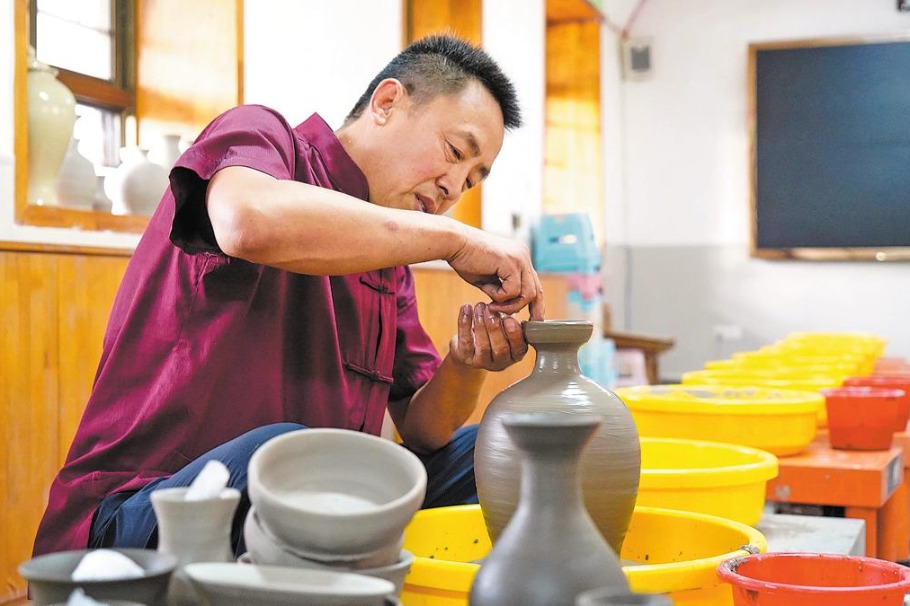College student's spreadsheet saves many lives


When an unprecedented rainstorm inundated Zhengzhou in Henan province on the afternoon of July 20, rescuing people trapped by the rising waters became a race against time, but finding them was complicated by the immense scale of the disaster and the lack of readily available information on their whereabouts.
That evening, a real-time excel spreadsheet was posted online, allowing rescuers to find the locations of those who were trapped.
Over the next 24 hours, this spreadsheet became a figurative bridge over troubled waters.
It was uploaded at 8:57 pm on July 20 on Tencent Docs, a free online document platform that permits multi-person collaboration. During its first day online, it was updated more than 270 times, and as of 7 pm, July 22, it had been viewed 6.5 million times.
The information contained was categorized and prioritized according to urgency.
For example, pregnant women about to give birth, infants and the elderly, were listed as urgently requiring rescue. Warnings about dangerous locations, like places with downed electricity cables, were also posted, as were the contact numbers and locations of temporary rescue shelters and of volunteers waiting to help.
Hundreds were rescued as a result, and the spreadsheet raised the hopes of the rest of the country as it closely followed the disaster relief work in Henan.
The document's creator, a graduate student in finance at the Shanghai University of Finance and Economics called Li Rui, has since been hailed as an unsung hero.
At 7:56 pm on July 20, as the scale of the disaster unfolding in her hometown was becoming apparent, the 22-year-old posted on Sina Weibo that she wanted to help those in need.
She then posted a Moment on her WeChat account asking for volunteers to help her collect information on people in need, create a priority list, and then connect them with rescuers and follow up on their situations.
Thirty-three students from the university, many of them her friends, responded to Li's appeal and an hour later, the spreadsheet was born.
To make things work more smoothly, Li divided the volunteers into two groups. One was responsible for collecting and verifying information, while the other was composed of volunteers from Henan province who were in charge of assisting rescue efforts.
"At first, we collected real-time information on Weibo on our own, which led us to repeat entries. We then used Python to maximize efficiency," Li said. "I also reminded volunteers to enter precise, concise information, to make it easy to understand."
Management of the document was later taken over by a team at Tencent, as the amount of data continued to accumulate.
To speed up communication, the Tencent team reached out to volunteer and rescue organizations and media groups, and created six group chats with over 200 members each on WeChat, which were a mix of Li's schoolmates and friends, as well as people from all over the country.
The availability and circulation of information is crucial in an emergency. The team at Tencent Docs said they learned that firsthand during their efforts to curb the spread of COVID-19 last year, when neighborhood committees, schools, and companies used online documents to record the latest information about the outbreak.
According to Tencent, 33 document templates for use in disasters are now available, and have been provided to local governments, rescue agencies, and social organizations.
On July 20, the technical team doubled the number of people able to edit a shared document at the same time, which made work easier and raised hopes.
"I felt terrible when I saw a message from a woman about to give birth. She must have been desperately worried that her child might not survive because of the deadly floods," recalled Jing Yujie, one of the volunteers from the university, who duly recorded the woman's details on the spreadsheet.
As a result the woman and her child were rescued.
"My hometown suffered flooding in 2018. I have always been grateful to the rescuers and people who donated food and clothing. I hope everyone will do their best to help each other whenever natural disasters occur," Jing said.
Li sent the first message to a person seeking help at 10:38 pm on July 20.
"It was not until 1:08 the next morning that I finally got a reply saying that he had been rescued and wanted to send us his thanks," she said. "Despite the really late nights, replies like that are real gifts, and this experience has inspired me to choose a career that contributes to the overall well-being of society," she said.
- Approved private vehicles now permitted direct access to Hong Kong
- China issues regulations on supervision over administrative law enforcement
- China outlines success of pilot care program
- NE China's Liaoning introduces professional titles for farmers
- China-developed methanol-fueled smart crude carrier delivered
- Shanghai Jiao Tong University unveils plan for new campus area





































